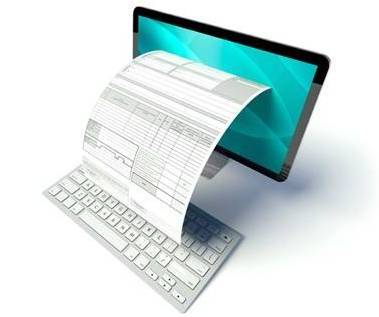That 30 percent tax credit on solar panels, (such as:
GOAL ZERO NOMAD 100) that was supposed to expire in 2016? It’s been extended, all the way to 2019. I feel like we just got an extension on a term paper — but if we don’t start writing now, the deadline is going to be here again before we know it.
To get the full Solar Investment Tax Credit (ITC), we’ve got to get our panels purchased and put up in the next three years. After that, the credit fades out: to 26 percent in 2020, and then to 22 percent in 2021. By 2023, the residential tax credit will be $0. And after that, who knows? We may all be living in egg-shaped, self-reliant, solar-powered tiny homes. The time really is now.
The price of solar panels — even for top-rated panels from SolarWorld and Canadian Solar — is down. It’s fallen by more than 75 percent since 2009, according to prominent environmentalist Bill McKibben. This drop reflects increased efficiency, both in the manufacturing process and in the panels themselves. Still, the initial cost of buying and installing a full system, including panels and supporting parts, can run between $10,000 and $40,000.
But, you don’t need to have a spare $10K to plunk down. Options like leasing and power purchase agreements (PPAs) from well-known solar names like Solar City and Vivint allow you to generate solar energy without up-front costs. Depending on where you live, there might even be a way for you to buy power from a solar farm.
There’s more than one route to the best solar panels.
If you own your home, and you can afford it, buying your panels outright is the best option. It’s the only way to take advantage of the ITC and other incentives, and it’s the only way to earn renewable energy credits (RECs) — actual income from selling your excess power back to your local utility.
Although solar panels are expensive up front, they pay off in the long run. According to EnergySage, a solar energy marketplace, the average solar payback time (or time required to recoup costs) is eight years. Panels, by contrast, last upward of 25 years, leaving you with a potential 17-plus years that’s pure savings.
A recent study by the Lawrence Berkeley National Laboratory shows solar energy systems add value to homes — in its comparison of California residences, every kilowatt of brand-new solar panel system added $5,911 to the selling price. (Granted that value decreased by $2,411 for every year the system had aged.)
Many solar installers will also give you the option to lease panels, and an increasing number are beginning to introduce PPAs as an option. But buying is the simplest option — it just requires cash up front, or you can take out a loan.
When you lease solar energy, the company you lease from will install panels on your roof at no charge. It’ll take care of maintenance, and you’ll pay a set monthly fee (think of it like a subscription) for the length of your lease, which will likely be about 15–20 years. The company, not you, will get to claim the ITC and other benefits. Just like with a car lease, at the end of your term, you’ll have the option to buy your panels, but solar developer Tom Kacandes cautions against buying. “Unfortunately, the leased systems I see sometimes have used second-tier panels and old technology string inverters to make more profit for the leasing company,” he says, “which bothers me as an advocate for solar power.”
The PPA option is very similar to leasing; instead of paying a subscription, you’ll pay per kilowatt-hour (kWh) of solar energy that you use. (If you need more than your panels produce, you can buy more energy from the grid — aka the power company you used pre-panel.) The biggest name in PPAs right now is SolarCity, chaired by Tesla and SpaceX’s Elon Musk, with Vivint not far behind.
Leasing, and its sibling the PPA, sound like lower commitments than buying. In a couple of ways, that’s true: You have no up-front cost (or at least a comparatively low one, if you’re asked to make a down payment), and maintenance is included, which can feel like a big weight off your shoulders. But solar leases have much longer terms than the ones we’re most familiar with: car leases.
I chose a three-year lease for my first car for a few reasons: I didn’t want to worry about maintenance; I wanted the lower monthly payments on a fuel-efficient car I wouldn’t otherwise be able to afford; and I wanted the option to walk away after three years in case I moved to a new city. In the end, I bought out the lease and paid more than I would have if I had just financed the car from the beginning (or bought a used car). I wouldn’t make the same decision now, but as a 22-year-old, I was paying for the privilege of a low commitment.
With a solar lease, you’re usually signing up for 20 years, which would have been long enough for you to purchase your own panels through a loan — and the subscription you’d have paid during that time could actually be more than the loan payments you would’ve made. If you lease and sell your house before the terms end, you have to either pay off your remaining time (eek!), or convince the buyer to take on the lease (eek again!).
“The lease system mostly benefits the banks, whereas owning the system outright yields a much greater return over the life of the system,” says Paul Maylone, a project manager for Standard Solar, a commercial installer based in Maryland. “However, I would encourage anyone thinking about a residential or commercial installation to carefully do the math and come to their own conclusions.”
So let’s do the math.
After contacting more than 10 solar installers in my area and receiving six quotes, I wound up with two top choices to compare, both from LA Solar Group: purchasing SolarWorld panels or leasing SunPower panels through my local utility. (Unfortunately, neither of the major PPA providers, SolarCity or Vivint, services my Southern California neighborhood.)
Because I currently rent an apartment, I used a sample 1,500-square-foot, two-bedroom house with the average monthly utility cost in my area ($152 for 9,125 kWh) to get my quotes. I asked to put $0 down so that I could show the highest monthly and total costs possible.
Lease: I’d save as much as $5,810 in 20 years.
With the lease, LA Solar Group estimates that I would be able to generate all the power I need with my SunPower panels. If this is true, my energy bill would fall to $0 and, with a lease payment of $136, I would save all of $16 per month. Over 20 years, if my utility bill stayed exactly the same, I’m projected to save $3,840.
But the US Energy Information Administration projects that the price of residential electricity is going to go up 11 percent by 2036. If that’s the case, and it increases at a consistent rate, I would save $5,810. (The plan LA Solar offered me includes maintenance, so my upkeep costs should be minimal.)
Buy outright: I’d save as much as $22,287 in 20 years.
If I were to buy SolarWorld panels, I would have a starting cost of $20,648. After the ITC and a utility rebate, that number would drop to $13,380. LA Solar Group thinks that with SolarWorld panels, I would still have to pay around $11 per month to my utility because my panels may not produce all the energy I need. So that’s a savings of $141 per month. Over 20 years, if my utility bill stayed the same, I’d save $20,460. If electricity costs rise by 11 percent, I’d save $22,287.
This plan includes 25-year warranties for the panels, inverter, and workmanship, so my upkeep costs should be minimal here too. Plus, there’s always the property value I’d be adding.
Get a loan: I’d save as much as $18,561 in 20 years.
My quote also came with two loan options: an 8-year term or a 20-year term, both with $0 down. With the 8-year loan, I would pay $17,088 total (about $178 per month). With the 20-year one, I would pay $26,160 total (about $109 per month).
Over the course of 20 years, if power costs stay the same, I’d save $16,734 with the 8-year loan and $7,661 with the 20-year loan. If power costs increased 11 percent, I’d be saving $18,561 with the 8-year loan and $9,488 with the 20-year loan — all not including the theoretical uptick in my property value.
My verdict: I’d choose to buy and do it outright if I could swing it. But these are just my numbers, based on my neighborhood, climate, and available rebates and installers. You should absolutely get some quotes and do a cost-benefit analysis of your own.
Community solar (or a shared renewable energy arrangement) lets you use solar energy without having to install panels on your property. Instead, you’d use energy from panels on a solar farm. The energy generated by the farm goes into the grid and is disbursed to members through a credit system. There are 89 community solar projects operating so far, but the only state where it’s widely available is Colorado. This option isn’t just the lowest-commitment model out there — it’s also available for apartment dwellers like me who are interested in switching to green energy.
Don’t leave any credits or rebates on the table.





